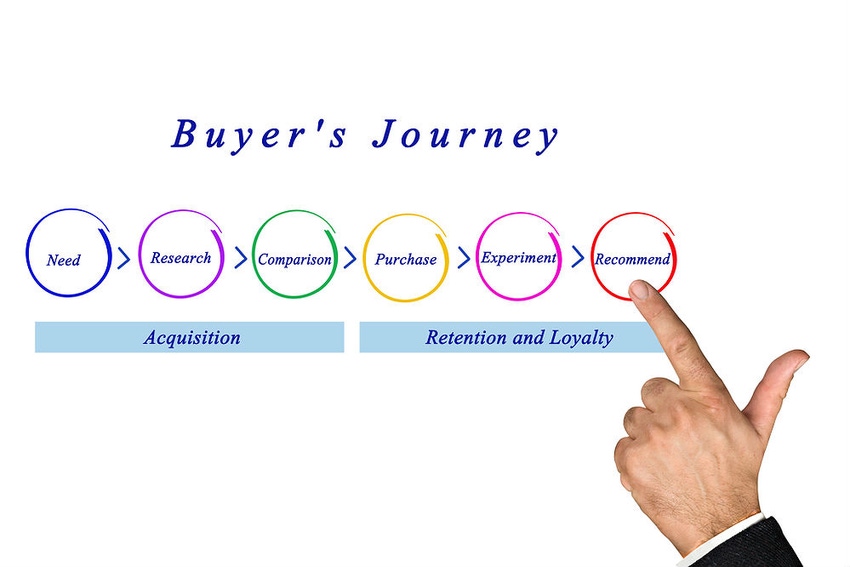Competition is fierce to gain partners' attention. They are key to capturing the attention of business customers.
July 16, 2019


Steve Kellam

Larry Walsh
By Steve Kellam and Larry Walsh
Digital transformation is forcing companies to change their business models and adapt to a new market reality. The evolution of the B2B buyer journey is impacting the way businesses engage with each other and the end consumer. Influence mechanisms, such as Google ratings and social media reviews, are as important to businesses as they are to consumers. This shift in buyer experiences has ushered a new era of B2B digital transformation initiatives.
 However, according to research from IDC, while two-thirds of the CEOs of Global 2,000 companies will shift their focus from traditional, offline strategies to more modern digital strategies to improve the customer experience before the end of 2019, 47 percent of companies haven’t even started their digital transformation yet — while 59 percent are worried that it might already be too late for them.
However, according to research from IDC, while two-thirds of the CEOs of Global 2,000 companies will shift their focus from traditional, offline strategies to more modern digital strategies to improve the customer experience before the end of 2019, 47 percent of companies haven’t even started their digital transformation yet — while 59 percent are worried that it might already be too late for them.
And there’s good reason to worry: The same study found that 55 percent of businesses believe that they have less than a year before they start to lose market share.
For the channel, similar challenges exist. While digital transformation is already taking place in the market, unfortunately, many vendors are behind. According to data from the latest 360insights Channel Pulse Report, four in 10 vendors say digital transformation either hasn’t begun yet or is just getting started among their channel partners, while less than 7 percent say their channels are completely transformed.
However, perhaps the greatest hurdle within the channel is not only for brands to complete their digital transformation initiatives, but to also encourage and even enforce their channel partners to do the same. This, however, is easier said than done. Thus, while brands continue to double down on digital transformation efforts, the channel is not adapting fast enough.
As digital transformation reshapes the B2B customer journey, today’s forward-thinking businesses must find new ways to enlist their channel partners to deliver the experiences buyers demand. To help them with their efforts, channel leadership from around the country will be gathering at Channel Chiefs Meet-Up, hosted by 360insights and The 2112 Group, in Napa Valley to discuss these said challenges, as well as the solutions that will help brands and channel partners align in their journey to drive better customer experiences and increase sales. The solutions that will be discussed are as follows:
Align Digital Transformation Goals
Manufacturers are adapting to a changing marketplace and calling on the channel to do the same. They’ve accepted that digital transformation is taking place and are trying to make headway within their own organizations. They expect their resellers to do the same and forge new connections with digitally empowered buyers.
In fact, companies that do transform digitally are creating highly engaged customers. And these customers are six times more likely to try a new product or service from their preferred brand, four times more likely to have referred your brand to others, and twice as likely to make a purchase with their preferred brand, even when a competitor has a better product or price.
Vendors and manufacturers want in on all of this loyalty and resulting revenue. However, when their channel partners aren’t as far along in the transformation process, it can hurt a company’s ability to …
… properly engage with the end customer. According to the annual 2112 Channel Chief Outlook report, 70 percent of channel leaders say partners’ failure to transform their businesses is the biggest threat to the channel’s long-term viability.
Therefore, aligning digital transformation goals with your channel partners is critical. This means that brands, together with their channel partners, need to make sure that the customer experience they’re offering to their B2B buyers is seamless. Even minor inconsistencies in the buyer’s experience can be a reason for them to go elsewhere.
Go Beyond Revenue and Change Behavior
By focusing on driving specific channel behaviors, not merely channel dollars, brands can ultimately attain greater market share and command of the market. But there are a few things that need to happen first before you’re able to identify the right KPIs to actually create behavior modification:
Understand who the partner is. Not every channel partner is the same. Partners all have different strengths and weakness and are also likely to have different needs in order to achieve success. It’s critical that brands understand those variances and respond differently with effective tactics to help your partners succeed in achieving your mutual goals.
What behavior are you trying to change? Every type of incentive program can be thought of as a lever for driving a specific behavioral change in your sales channel. Get clear on which behaviors in your channels you need to change with your programs.
What incentive will work best? Understanding how each type of program functions and then matching the program to your desired goals is going to make an enormous difference in the success of reaching those goals.
Shifting incentive spending illustrates how brands are working to entice resellers to speed up digital transformation. For example, consider how many organizations are using MDF/co-op dollars as a partner scoring benchmark. Additionally, incentive techniques like back-end margin programs and Volume Incentive Rebate (VIR) campaigns don’t just encourage one-time sales. These motivational programs can usher in opportunities to change behavior in a more comprehensive way — speeding up digital transformation and enabling a better sales experience for the end customer.
Vendors shouldn’t underestimate the power of education and training as sales enablement tools. In fact, Salesforce and Amazon Web Services (AWS) provide training and enablement to professional-services partners that facilitate the implementation of their products to end customers, without actually selling their products on their behalf.
And, above all, vendors should focus on eliminating complexity in their channel programs and processes. In its 2019 Ease of Doing Business Report, 2112 found vendors that make it easier to do conduct business have a threefold-to-fivefold greater share of partner wallet than those perceived as difficult to do business with.
Evolve Your Evaluation
After aligning goals and making sure your channel partners are on the same “digital” page, sustaining that momentum and moving digital transformation progress forward are key. Brands are going beyond revenue in evaluating …
… resellers, leveraging a management business objective (MBO) approach that employs a broad mix of KPIs to truly measure the value of channel partnerships.
By migrating from purely revenue-based reseller scoring to a more holistic Management Business Objective (MBO) approach, many brands are aligning reseller performance more closely with activities that move the reseller toward larger goals. Half of respondents surveyed in the Channel Pulse Report said they use non-revenue-based KPIs in their scoring systems, and 56% of those using these KPIs say they have a significant impact on a reseller’s earning power.
Among leaders using non-revenue-based scoring methods, engagement (44%), pipeline size (44%) and co-op/MDF usage (44%) led the way in most commonly used KPIs. The findings reveal that resellers are more likely to use the support available to them from brands, while pipeline size and co-op/MDF usage indicate reseller success in building a robust marketing and sales engine of their own. Not surprisingly, the 2112 Channel Chief Outlook report found that four in 10 channel chiefs list MDF and co-op funding as the top influencer of partner performance.
A mix of sales and marketing metrics rounded out the list, including pipeline growth, participation rates and new logo sales, with a common theme of KPIs tying back to earnings as the underlying definition of success.
Automate Key Processes
In order to achieve a measurable amount of success in aligning channel partners with the buyer’s journey, automating processes is key. But automation is only part of the overall digital transformation journey. Even more imperative is access to data and the ability to measure data and then transform it into actionable insights used to make better business decisions.
What holds most companies back is access to the data and data science to ensure success. Unfortunately, uncovering data insights in channel sales and marketing is often a low internal priority. Plus, channel data is often siloed in many proprietary systems, with technical resources and expertise to access this data available only at the vendor level and not the consumer level.
Success requires choosing automated platforms that provide better transparency into channel performance, better measurement tools, as well as better access to the data. Working with the right technology partner and platform allows brands to bring data together, cleanse it and apply the data science necessary to derive value — along with better business outcomes.
Competition is fierce among brands to gain the attention of partners, who are the key to capturing the attention and, ultimately, the wallet share of business customers. For brands, both revenue and reputation are on the line. But by leveraging the right tools and techniques, the partner journey will successfully align with and become embedded in the buyer journey — creating deeper engagement and, ultimately, stronger sales.
Steve Kellam is vice president of alliances at 360insights and Larry Walsh is CEO and chief analyst, The 2112 Group.
Read more about:
AgentsYou May Also Like
